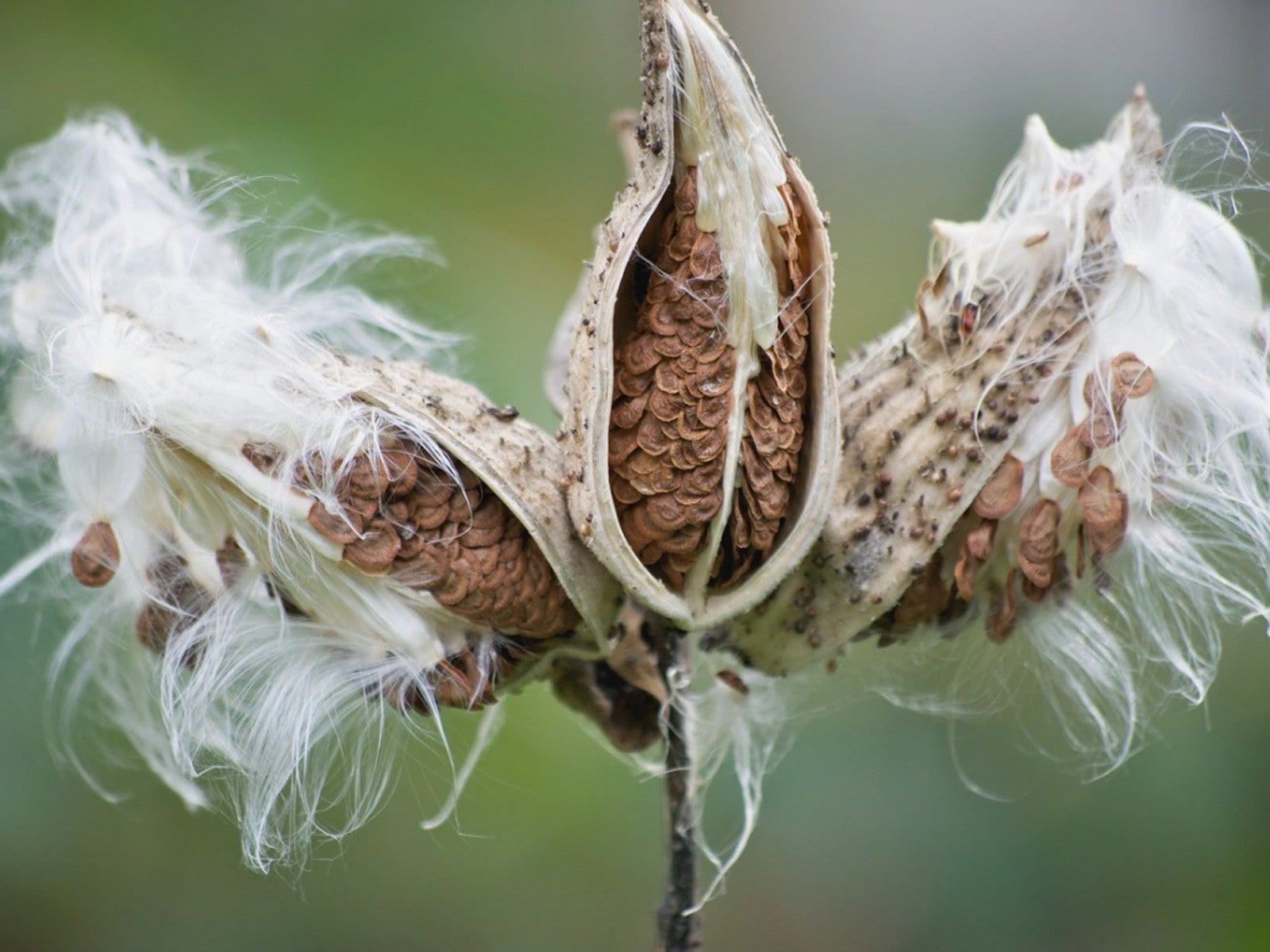Winterizing Milkweed: Caring For Milkweed Plants In Winter


Since my favorite hobby is raising and releasing monarch butterflies, no plant is as close to my heart as milkweed. Milkweed is a necessary food source for adorable monarch caterpillars. It's also a beautiful garden plant that attracts many other pollinators, while not requiring much maintenance. Many wild milkweed plants, often considered weeds, will grow happily wherever they sprout without any “help” from gardeners. Though many milkweed plants need only the help of Mother Nature, this article will cover winter care of milkweed.
Overwintering Milkweed Plants
With over 140 different types of milkweeds, there are milkweeds that grow well in almost every hardiness zone. Winter care of milkweed depends on your zone and which milkweed you have.
Milkweeds are herbaceous perennials that flower throughout the summer, set seed, and then naturally die back in fall, going dormant to sprout anew in spring. In summer, spent milkweed flowers can be deadheaded to prolong the blooming period. However, when you are deadheading or pruning milkweed, always keep a careful eye out for caterpillars, which munch on the plants throughout the summer.
In general, very little milkweed winter care is needed. That said, certain garden varieties of milkweed, such as butterfly weed (Asclepias tuberosa), will benefit from extra mulching through winter in cold climates. In fact, no milkweed plant will object if you want to give its crown and root zone some extra winter protection.
Pruning can be done in fall but isn’t really a necessary part of winterizing milkweed plants. Whether you cut back your plants in fall or spring is totally up to you. Milkweed plants in winter are valued by birds and small animals who use their natural fibers and seed fluff in their nests. For this reason, I prefer to cut milkweed back in spring. Simply cut last year’s stems back to the ground with clean, sharp pruners.
Another reason I prefer to cut milkweed back in spring is so that any seed pods that formed late in the season have time to mature and disperse. Milkweed plants are the only plant that monarch caterpillars eat. Sadly, because of today's heavy use of herbicides, there is a shortage of safe habitats for milkweed and, therefore, a shortage of food for monarch caterpillars.
I have grown many milkweed plants from seed, like common milkweed (Asclepias syriaca) and swamp milkweed (Asclepias incarnata), both of which are favorites of monarch caterpillars. I've learned from experience that milkweed seeds need a cold period, or stratification, to germinate. I have collected milkweed seeds in autumn, stored them through winter, then planted them in spring, only to have just a small fraction of them actually germinate.
Sign up for the Gardening Know How newsletter today and receive a free copy of our e-book "How to Grow Delicious Tomatoes".
Meanwhile, Mother Nature disperses milkweed seeds all over my garden in autumn. They lay dormant in garden debris and snow through winter, and germinate perfectly in spring with milkweed plants everywhere by midsummer. Now I let nature take her course.

Darcy is a former contributor to Gardening Know How. She is a professional landscape designer and gardening writer with experience in plant sales. An avid gardener, Darcy has a passion for sharing practical tips to help others grow.